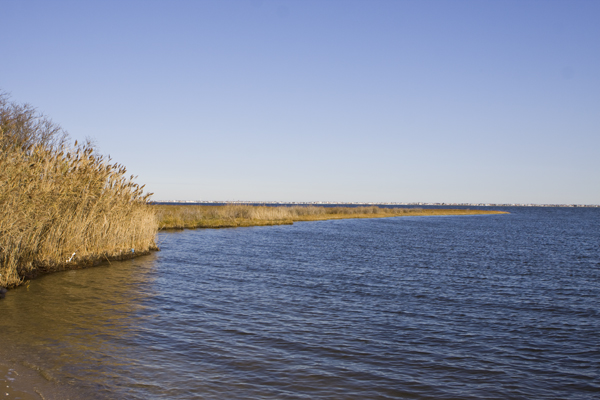Bills To Save Bay Not Sufficient – State Must Provide Funding, Develop Enforceable Standards

This Op-Ed ran today in the Asbury Park Press – I was given 700 words and I appreciate their commitment to this story.
People really need to start asking about where the NJ environmental groups are on these issues, because they supported a package of bills that they must know will not work:
Bills to save bay not sufficient
State must provide funding, develop enforceable standards
Barnegat Bay has been described as the second-most-polluted bay in the United States – first prize goes to Chesapeake Bay. While there are significant differences between the two bays, they share common threats – pollution, overdevelopment and habitat loss. The solutions to these problems also share a common thread.
The Asbury Park Press’ superb series “Barnegat Bay Under Stress” documented the problems and helped galvanize a scientific and political consensus that the bay is dying and must be restored. Last week, after more than a year of deliberation, a joint legislative panel released a package of four bills purported to protect and restore the ecological health of the bay. Unfortunately, those bills offer up piecemeal, loophole-ridden, scientifically baseless and unfunded schemes that will not work.
The core bill, to merely allow Ocean County to create a stormwater utility, is opposed by the county. Rather than taking direct state action, our legislators, like Blanche DuBois in “A Streetcar Named Desire,” rely on “the kindness of strangers” to turn around a deteriorating situation.
A better approach can be found in examining the recent set of reforms enacted to fix Chesapeake Bay. The management failures that brought the Chesapeake to the edge of ecological collapse are echoed in Barnegat Bay.
Back in 2004, The Washington Post exposed the fact that managers of the Chesapeake Bay program were inflating progress and misleading the public about the health of the bay. Congress directed the Government Accountability Office to investigate the program. In a 2005 report, the GAO found that despite having spent more than $5 billion in direct aid and support funds over the prior decade, the Chesapeake Bay’s health actually was declining.
GAO recommended that the administrator of the federal Environmental Protection Agency develop a “comprehensive, coordinated implementation strategy” for restoring the Chesapeake.
Responding to the GAO report, President Barack Obama and EPA Administrator Lisa Jackson took a series of dramatic steps.
In a May 2009 executive order, Obama took federal control of the previously locally driven management program. The order also assured progress, performance and accountability by mandating legally enforceable standards and imposing numeric goals for pollution reduction and timetables for action.
Jackson backed that up by appointing a well-respected environmentalist and former head of Maryland’s environmental agency to lead the new program. Jackson also invoked the Clean Water Act’s Total Maximum Daily Load regulatory program to replace the failed voluntary partnership effort. A TMDL caps pollutant loading and mandates reductions in pollution to achieve water quality standards.
The same science-based and comprehensive Clean Water Act quality standards and regulatory tools are available to the New Jersey Department of Environmental Protection but it has yet to step up to the plate. It doesn’t have water quality standards for nitrogen pollution, which is killing the bay, or water quality monitoring and assessment methods to measure the bay’s ecological decline.
To save Barnegat Bay, legislators would need to direct DEP to adopt those necessary reforms. And the Legislature would have to provide funds, not just rhetoric, to back up these regulatory tools. For instance, backing its commitment to restoring the Chesapeake, the state of Maryland recently enacted a $2.50 per month “flush tax” on homes to pay for necessary upgrades at sewage treatment plants to cut pollution loads.
The Barnegat has different infrastructure needs than the Chesapeake, but similar financial challenges. So instead of relying on the kindness of strangers, New Jersey legislators could tailor a suite of small dedicated fees paid by the sources of pollution – businesses, homeowners, recreational users (marinas, jet skiers) and summer tourists – to fund an effective program.
Annual revenues from those fees could securitize the large infrastructure upgrade and restoration program required to save the bay. This investment would be well worth the cost; the bay produces more than $3.4 billion each year in economic benefits. On top of that, homeowners have hundreds of billions of dollars in equity invested in a healthy bay.
Continued inaction will cause the collapse of these tremendous and irreplaceable ecological and economic assets. The loss of Barnegat Bay as a functioning body of water is not an option.
Bill Wolfe is director of NJ PEER (Public Employees for Environmental Responsibility) and a former policy analyst and planner with the state Department of Environmental Protection.